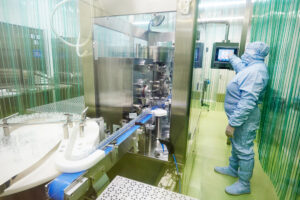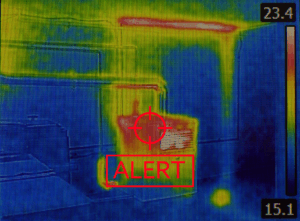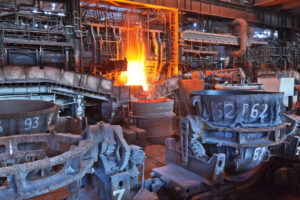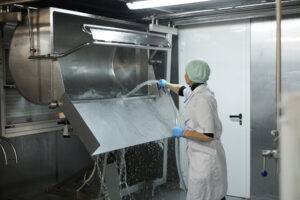The video monitoring systems industry is growing continuously; it is expected to grow at 9.2% from 2023 to 2028. This isn’t surprising, as video monitoring now goes far beyond surveillance.
In industrial environments, video monitoring is used to operate machinery, improve operations, streamline processes, prevent accidents, and more.
However, all this is only possible if you choose the right industrial camera system. Since no two facilities are identical, it’s important to understand your requirements before investing.
Let’s take a look at the main criteria you need to take into account before you choose an industrial camera system.
1. Assess the Environment: Do You Need Industrial Cameras?
The first step is determining whether you need an industrial-grade camera. Industrial cameras are designed to handle challenging environments, such as extreme temperatures, dust, moisture, and hazardous materials. Regular surveillance products don’t hold up in these settings, leading to malfunctions or poor image quality. Ask yourself:
- Will the camera be exposed to outdoor elements or extreme weather?
- Is the environment dusty, humid, or corrosive?
- Is there a risk of explosions, requiring specialized explosion-proof cameras?
- Could the camera get hit by debris?
- Do you have regulatory requirements for certain grade cameras?
If the answer to any of these questions is “yes,” industrial cameras with appropriate protection ratings are essential. These cameras offer rugged housing and advanced sealing to ensure continuous operation in harsh conditions.
One important thing to note here is that it’s not all or nothing—you may not need industrial-grade cameras everywhere and can mix and match. For instance, if you manage a food processing plant, you need specialized cameras on the production floors, but you can use commercial cameras in the office spaces.
2. Beyond Cameras: Vibration Mounts
In many industrial settings, particularly in factories, sawmills, mines, or near heavy machinery, vibration is a constant challenge. Vibration can blur footage, damage sensitive camera equipment, or loosen components over time.
Therefore, you need to choose a camera system that includes or is compatible with vibration-resistant mounts. This additional layer not only protects the camera but also ensures that video quality remains stable, even in high-vibration environments like right on a log debarker.
Vibration-resistant mounts greatly help increase the durability of a camera. Check out this Opticom camera that got hit by a log: the camera, with all its sensitive mechanisms, remains intact and is still functioning. The vibration mount is destroyed, which is exactly what it was designed to do: protect the most expensive piece of equipment.
3. IT Networking: Who Will Set Up the System?
Installing an industrial camera system requires more than just mounting hardware — it also needs the IT infrastructure to handle video transmission, storage, and access. This will likely involve setting up a dedicated video network to stay separate from your main network.
We can calculate network requirements for you to pass along, and you can consider whether you have the in-house IT expertise to handle this setup or if you’ll need external assistance. Additionally, make sure the camera system you choose supports industry-standard networking protocols to facilitate smooth integration with your IT infrastructure.
4. Who Will Be Using the Footage?
The end users of the footage should be a significant consideration in your decision-making process. Will the footage be watched (live or recorded) by operators, managers, safety personnel, or others?
The type of user can influence the kind of system you need. Here are just a few examples:
- Operators likely need strategically placed cameras and quick and easy access to live feeds to keep an eye on the line.
- Maintenance teams might require recorded footage for troubleshooting or predictive maintenance, meaning they need clear, high-quality video that can be stored for extended periods.
- Managers may need the option to view footage in real time or after the fact. They could be looking for safety issues, identifying the lead-up to an issue, or other managerial functions.
Tailoring the camera system to the needs of the end users will ensure that the investment delivers maximum value.
5. Video File Storage
Another key consideration is where and how to store the vast amount of footage that industrial camera systems generate. Depending on your operations, you might require constant recording, motion-activated recording, or periodic snapshots, all of which impact your storage needs.
Local storage options like DVRs or NVRs (Network Video Recorders) are common with systems under 75-100 cameras, especially in environments where internet access is unreliable or security concerns limit cloud use. Software (cloud based) storage is recommended for larger scale systems.
The amount of time footage will be stored also impacts your storage needs. Long-term storage requires more space than wiping footage periodically. You’ll also want to consider file backup options as well as whether and how to offer off-site access to the footage.
6. Choose the Right Monitors
Selecting the appropriate display for your camera system is often an overlooked decision, but it’s critical to overall performance. In environments where real-time monitoring is essential, like operator cabs or security control rooms, high-resolution, large-format monitors are necessary to provide clear, detailed images of one or many feeds.
These monitors should also be durable and capable of 24/7 operation without degrading in quality, especially if they’ll be located on the floor or near production.
Consider ergonomic factors as well. Monitors that reduce eye strain, provide wide viewing angles, and are easy to mount will improve the efficiency of your monitoring teams. Don’t underestimate the importance of a high-quality display — it’s what brings your camera footage to life.
7. Plan for the Future: Is Your Industrial Camera System Scalable?
Your industrial camera system should be able to grow with your business. As your operations expand or change, you might need to add more cameras or expand your storage.
To make sure the system you choose allows for easy scalability, opt for a system that supports:
- Modular upgrades so you can add components like extra cameras or storage without needing a complete system overhaul.
- Integration capabilities so you can integrate add-ons from other suppliers without hassle.
- Network flexibility so your video monitoring system is compatible with different network infrastructures and can be adapted to future network upgrades without requiring extensive changes.
A scalable system will protect your investment and allow your monitoring capabilities to evolve in line with your business needs.
8. Work with the Right Partner for Your Industrial Camera System
Choosing the right industrial camera system is not just about the technology; it’s about the company behind the technology. The partner you select should offer:
- Expert consultation to help you determine the best cameras, mounting solutions, and networking configurations.
- Ongoing support to troubleshoot issues, answer questions, and provide guidance as needed.
- Custom solutions, especially if you have unique environmental or operational requirements. A good partner will tailor their offerings to your specific needs.
- A proven history of success in your industry or similar industrial spaces so you know their technology and team are here to stay.
- A guarantee that their technology will work as promised and stand up to your environment so that if anything happens, you get a replacement or other needed assistance.
At Opticom, we don’t just sell cameras. We help our customers implement video monitoring solutions tailored to their needs. This is why we have been a leader in industrial video monitoring for more than 50 years.
Want to work with a real partner, not a vendor, for your industrial camera system? Get in touch with our consultants.







